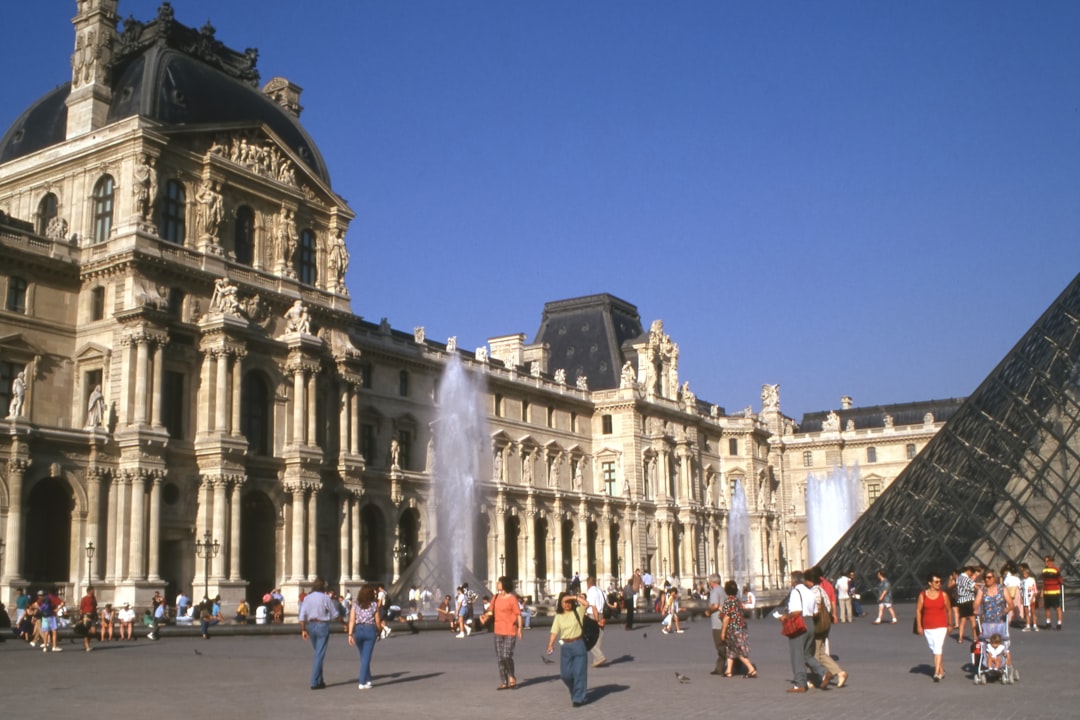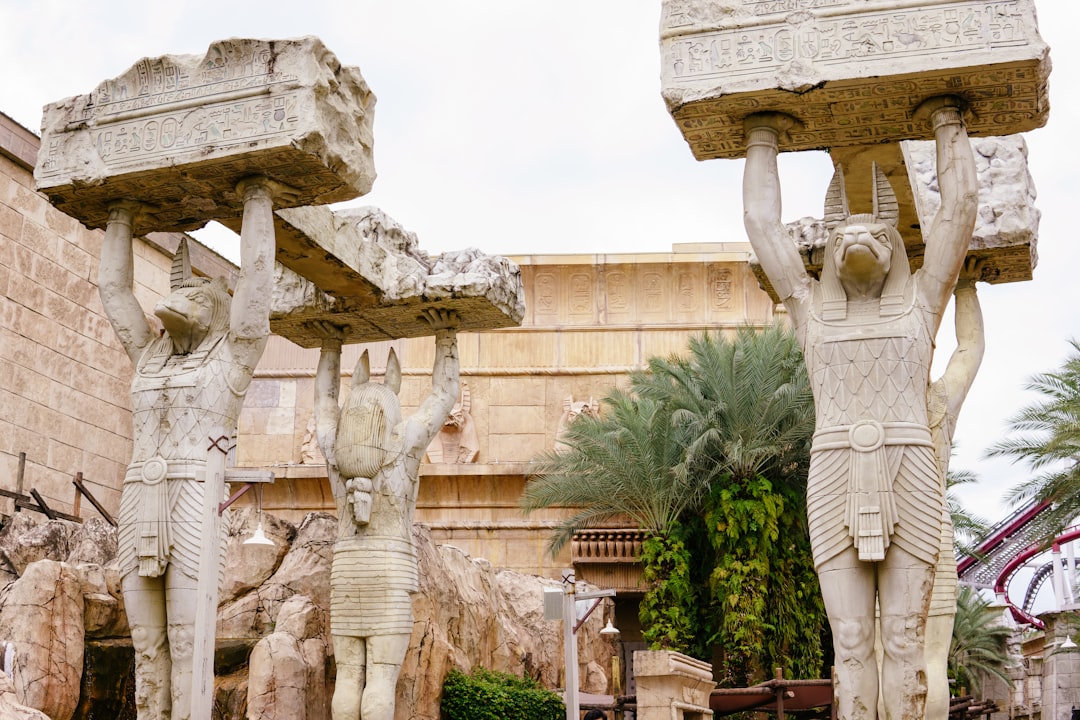

Engage prospects with a scan and streamline customer engagement with FREE QR code marketing tools by Sona – no strings attached!
Create a Free QR CodeFree consultation

No commitment

Engage prospects with a scan and streamline customer engagement with FREE QR code marketing tools by Sona – no strings attached!
Create a Free QR CodeFree consultation

No commitment
Tourist attractions face the ongoing challenge of turning a visitor’s moment of interest into meaningful engagement and measurable action. Modern travelers, equipped with smartphones and high expectations, often interact with printed materials or on-site exhibits but stop short of taking the next step, which leaves high-value engagement and actionable visitor insights untapped. Many attractions miss out on capturing these promising prospects simply because their interest is never formally tracked or followed up.
QR codes offer a seamless bridge between offline exploration and online conversion, allowing marketers and experience managers at tourism destinations to deliver eco-friendly, multilingual content, interactive travel guides, and instant booking or feedback. They also solve the historical pain point of anonymous, untracked visitor interest. By embedding smart QR strategies into key visitor moments, attractions can ensure every scan delivers real-time utility to guests and long-term value to operators, transforming casual curiosity into measurable engagement.
This article explores how QR code technology is redefining visitor interactions at tourist attractions, surfacing hidden demand, and enabling more agile, data-driven marketing decisions. Cultural sites and local destinations can unlock the full potential of every touchpoint, from discovery to repeat visits, by connecting physical experiences to digital outcomes that convert.

For many tourist attractions, a major barrier to higher conversions is the disconnect between a visitor’s physical presence and the digital actions operators hope to inspire. Static brochures, paper maps, and manual sign-in books have historically struggled to prompt action or capture valuable audience signals. The result is missed opportunities to re-engage high-interest visitors or track the true impact of promotional campaigns across exhibits, guided tours, and retail.
QR codes bridge this gap by turning any physical surface into an immediate action point. When strategically placed and paired with benefit-driven calls to action, QR codes prompt visitors to download digital guides, reserve timed-entry tickets, submit feedback, join loyalty programs, or claim special offers on the spot. Attractions that adopt QR codes throughout their venues can see higher scan-to-action rates, improved attribution, and a clearer understanding of how in-venue behaviors lead to downstream revenue. For example, timed-entry can be streamlined with QR code ticketing.
Key steps for effective adoption include:
By feeding each scan into a unified visitor ecosystem, experience managers can identify where engagement drops off, recover interest before it is lost, and tailor follow-ups to actual in-venue behaviors. Over time, this creates a learning loop that boosts conversions, enhances guest satisfaction, and strengthens revenue performance.

The shift toward digital-first tourism has exposed a persistent frustration: plenty of visitor traffic remains unmeasured and anonymous, which makes it difficult to nurture, retarget, or even recognize visitors who show intent. Guests read plaques, snap photos, or browse printed maps, yet unless they buy a ticket or fill out a form, their interest remains invisible to downstream marketing efforts. This anonymity obscures what is working, hides high-value demand signals, and limits the impact of well-funded promotional campaigns.
QR codes address these gaps by turning print ads, signage, and other analog moments into digital entry points. With one scan, attractions can deliver relevance in the exact moment of curiosity. Guests get instant access to what they care about, and operators gain attribution data that ties physical engagement to digital outcomes such as bookings, reviews, or newsletter sign-ups.
Tourist-specific advantages include:
By combining instant utility with measurable data, QR codes become a foundational tool for attractions that want to modernize experiences, reduce friction, and boost conversions across the visitor lifecycle.
Tourist attractions must deliver relevant content across diverse visitor journeys: families on a day trip, international travelers speaking multiple languages, and local members returning for special events. Keeping content fresh while managing costs and tracking impact can be difficult with printed materials alone. QR codes offer flexible formats that match different needs and contexts inside a venue and across marketing channels.
Selecting the right format starts with the outcome. If you want to route guests to an interactive map, a web link to a mobile landing page is ideal. If your goal is to capture feedback or a tour waitlist, a dynamic form is better. For connectivity challenges in large parks or historic districts, Wi-Fi access via QR can remove barriers to digital engagement.
Common QR code formats that work well for attractions include:
When managed centrally with a dynamic platform, these formats work together to deliver relevant experiences and consistent tracking. You can update destinations, rotate offers, or change language options on the fly, ensuring that printed materials never go out of date.

Many attractions underutilize high-traffic touchpoints for digital engagement. Entrances, exhibit clusters, queue lines, and gift shops are full of guests experiencing micro-moments of curiosity that often pass without action. Untracked interest at these points means potential bookings, upsells, and valuable feedback slip away.
Growth comes from placing QR codes where visitors naturally seek more information, where time is available for scanning, and where intent is highest. Think of queues as time for education, exhibit zones as sparks for deeper content, and exits as opportunities to capture feedback, referrals, or repeat-visit offers.
High-impact placements include:
By mapping scans to locations and moments, you will see which touchpoints create conversion momentum and which need redesign. This site-wide visibility converts hidden demand into measurable growth.

Attractions often report that visitors explore deeply but leave without taking an action that benefits either party. Perhaps they loved a sculpture but never found the story behind it, or they enjoyed a trail but never discovered the membership that includes guided hikes. QR codes close those gaps by making the next best action obvious and effortless.
Three high-impact use cases anchor most QR strategies in tourism:
Each use case makes engagement measurable and actionable. Over time, collected data reveals the content that resonates most and the offers that reliably lead to conversion, whether that is ticket upgrades, memberships, donations, or merchandise sales.
A core challenge in tourism marketing is that many visitors remain anonymous until the moment they transact, making it hard to tailor follow-ups that reflect what they actually explored. QR code data solves this by capturing intent data and context: where the scan happened, what a person wanted to do, and how far they progressed.
By assigning unique codes to stages of the journey, you can create behavior-based segments automatically. Visitors who scan an exhibit label to watch a conservation video signal different interests from those who scan in the gift shop to view a merchandise bundle, and both are different from those who scan a membership comparison chart.
Practical steps to segment and retarget include:
With a platform like Sona QR, each code becomes a smart entry point into your marketing funnel. The result is retargeting based on real behavior, not assumptions, which increases relevance, conversions, and lifetime value. For tactical execution, see Sona’s retargeting playbook.
Disconnected campaigns waste budget and dilute visitor trust. Guests might see a printed ad that does not match the on-site message or encounter a social post that does not reflect what they experienced at the venue. QR codes unify these touchpoints by making each asset a linked, measurable step in a connected journey.
When every channel points to mobile-first experiences with consistent messaging, guests know what to expect and why to care. Operators gain a single view of which channels drive engagement and which placements deserve more investment.
Examples relevant to tourist attractions include:
Centralizing performance analytics with a platform like Sona QR ensures that scan activity, bookings, and feedback flow into one dashboard. This enables continuous optimization across the channels that matter most.
Many attractions struggle with low scan rates or modest conversion because deployment is not systematic. Common pitfalls include generic code destinations, poor placement, and neglected analytics. A structured rollout improves results and turns individual scans into predictable revenue.
Below is a practical, attraction-specific checklist you can implement today.
Decide on a specific, measurable goal for the campaign. Examples include increasing bookings for a new guided tour, boosting reviews on Google and TripAdvisor, growing family pass enrollments, or capturing multilingual feedback on a newly opened exhibit. Tie each use case to a clear business outcome such as revenue, participation, or satisfaction.
Focus on moments when intent is highest. If queues are long, scan-to-order food or scan-to-learn experiences can reduce frustration and improve ratings. If exhibits inspire questions, scan-for-AR or scan-for-deeper-story content can keep curiosity flowing and lead to future donations or memberships.
Choose between static and dynamic codes based on your need for flexibility and tracking. Static codes work for evergreen destinations like a downloadable map. Dynamic codes let you change destinations without reprinting and capture analytics for attribution.
For most conversion-focused campaigns, dynamic codes are best. They support A/B testing of landing pages, device-aware routing, and automatic tagging by location or partner. Use dynamic forms when collecting feedback, incident reports, or consent for communications so you can adapt fields over time.
Design for visibility, clarity, and trust. Incorporate branding, a clear frame, and an explicit call to action such as Scan to book your spot at 2 pm or Scan for the kids trail and stickers. Add a short benefit statement to set expectations and motivate scanning.
Test scannability in real conditions. Check multiple devices and camera apps, evaluate glare on glass, and ensure codes are large enough for the distance. Place alternative codes at lower heights for children and guests using mobility devices. If Wi-Fi or cell service is limited, provide a Wi-Fi QR nearby or offer a short URL as a backup.
Roll out the campaign where intent and dwell time coincide. Prioritize entry gates, exhibit clusters, queues, dining areas, and retail counters. Extend reach with partner placements such as hotel concierges, city information centers, and transit shelters near your venue.
Train staff to demonstrate scanning and explain the benefit. Staff advocacy can double scan rates for hesitant visitors. Provide quick scripts, such as Ask me what you can unlock with this code or Scan here to skip the line and book the next tour, so frontline teams can prompt action naturally.
Monitor scan volume, completion rates, and downstream outcomes like bookings, reviews, or cart value. Compare performance by placement and creative to identify top performers. Use UTM parameters on destinations to attribute results by source and medium.
Iterate quickly. Test alternative CTAs, reposition codes to reduce glare, and rotate offers based on demand patterns. With Sona QR, you can update destinations instantly, analyze performance by channel, and sync outcomes with your CRM to measure revenue impact over time. Start creating QR codes for free.
Tourism marketers need to prove which on-site and print initiatives drive bookings, donations, reviews, or purchases. Traditional methods often stop at impressions or visits and do not connect the dots between physical engagement and revenue. QR code analytics fill this gap by attributing scans to outcomes across the funnel.
A modern analytics stack not only captures the scan, but also follows the journey to conversion. When your QR platform connects to web analytics, CRM, and point-of-sale systems, you can see how each code influences pipeline and revenue, then refine content and placement accordingly.
With Sona QR’s product overview, and Sona.com, attractions can:
The result is a measurable, repeatable system that proves impact and guides investments. Instead of guessing which materials work, you can see the path from scan to sale and scale what converts.
Success with QR codes accelerates when campaigns stay fresh, measurable, and supported by staff. Avoid common mistakes such as using a single generic code across an entire venue or letting content grow stale after initial launch. The most effective operators treat QR as a living system that evolves with visitor behavior and seasonal programming.
Select best practices that match your environment, goals, and tools. Pair them with creative deployments that delight guests and make action obvious.
Recommended tactics:
Creative ideas to try:

Tourist destinations worldwide are transforming untracked interest into measurable engagement and revenue. The common thread is a shift from static materials to dynamic, mobile-first content that rewards scanning with immediate value while giving operators robust data to improve experiences.
Here are examples that illustrate what is possible:
Each example underscores a pattern: deliver instant value tied to context, attribute outcomes to specific placements, and iterate based on data. The result is better guest experiences, smarter marketing, and clearer ROI.
Attraction managers often cite two root causes when QR programs underperform. The first is a mismatch between context and destination, such as sending a line of guests to a long video instead of a quick booking option. The second is lack of staff engagement to promote scanning and explain benefits. Both reduce scan rates and limit conversion potential.
To avoid these pitfalls, validate performance frequently and keep content relevant to the moment. A strong operational cadence, combined with data-informed decisions, ensures that QR stays a high-impact lever rather than a forgotten sticker on a sign.
What to prioritize:
By anticipating and addressing these challenges, attractions can capture and convert actions that previously went unnoticed. Over time, these improvements compound into a more resilient, data-driven operation that delights guests and grows revenue.
QR codes have become a strategic lever for tourist attractions seeking to overcome long-standing challenges around untracked engagement, missed conversion opportunities, and siloed data. By transforming both physical and digital touchpoints into actionable, measurable journeys, attractions can surface valuable demand signals, adapt in real time to visitor interests, and foster deeper, more sustainable relationships. The approach is eco-friendly, cost efficient, and designed for modern travelers who expect mobile-first convenience.
A holistic, insight-driven QR strategy powered by platforms like Sona QR and Sona.com gives teams the tools to generate, manage, measure, and attribute every scan. Start by selecting one or two high-impact use cases, deploy dynamic codes with clear CTAs, and connect scan data to your analytics and CRM. Start creating QR codes for free.
QR codes have transformed the tourist attractions industry from static information points into dynamic, interactive engagement channels. Whether it’s enhancing visitor acquisition, enriching on-site experiences, or providing personalized content, QR codes replace traditional brochures and signage with instant, mobile-friendly interactions that capture real-time data to optimize every touchpoint for maximum visitor satisfaction and increased revenue.
Imagine knowing exactly which exhibits or offers captivate your audience—and instantly updating your campaigns without costly reprints. With Sona QR, you can create dynamic, trackable QR codes in seconds, monitor visitor behavior, and connect every scan directly to your business goals. No missed opportunities, just smarter, more impactful visitor engagement.
Start for free with Sona QR today and turn every scan into a memorable experience and a measurable conversion.
QR codes enhance visitor engagement by connecting physical experiences to digital content, enabling instant access to guides, bookings, feedback, and multilingual information while providing measurable data for operators.
Attractions can increase conversions by replacing static materials with interactive QR experiences, setting clear goals for each code, placing codes accessibly with clear calls to action, and using dynamic tracking to optimize engagement.
Common QR code formats include web links for mobile pages, vCards for contact sharing, SMS or email triggers for communication, Wi-Fi access codes, app downloads or AR overlays for immersive experiences, and dynamic forms for feedback collection.
High-impact placements include entry gates, exhibit labels, queue lines, food courts, and gift shops where visitors have time and intent to scan, turning moments of curiosity into measurable actions.
QR codes capture intent data by location and content scanned, allowing segmentation of visitors based on behavior and interests, which can be synced with CRM and ad platforms to deliver personalized follow-ups and increase conversions.
Challenges include mismatched content to context and lack of staff promotion; they can be avoided by ensuring relevant, fast-loading destinations, personalizing experiences, regularly updating content, and training staff to encourage scanning.
QR codes provide quick and easy access to interactive guides, multilingual content, AR storytelling, instant booking, and feedback submission, enriching the visitor journey and reducing friction.
Tracking captures where, when, and how visitors engage, linking scans to outcomes such as bookings or reviews, enabling real-time optimization, improved attribution, and data-driven marketing decisions.
By replacing printed brochures and maps with dynamic digital content accessed via QR codes, attractions reduce paper waste, printing costs, and translation overhead, supporting eco-friendly practices.
QR codes can trigger AR overlays, 3D reconstructions, audio tours, live route updates, scavenger hunts, and social sharing challenges that provide immersive and interactive visitor experiences.
Use Sona QR's trackable codes to improve customer acquisition and engagement today.
Create Your FREE Trackable QR Code in SecondsJoin results-focused teams combining Sona Platform automation with advanced Google Ads strategies to scale lead generation

Connect your existing CRM

Free Account Enrichment

No setup fees
No commitment required

Free consultation

Get a custom Google Ads roadmap for your business






Launch campaigns that generate qualified leads in 30 days or less.
